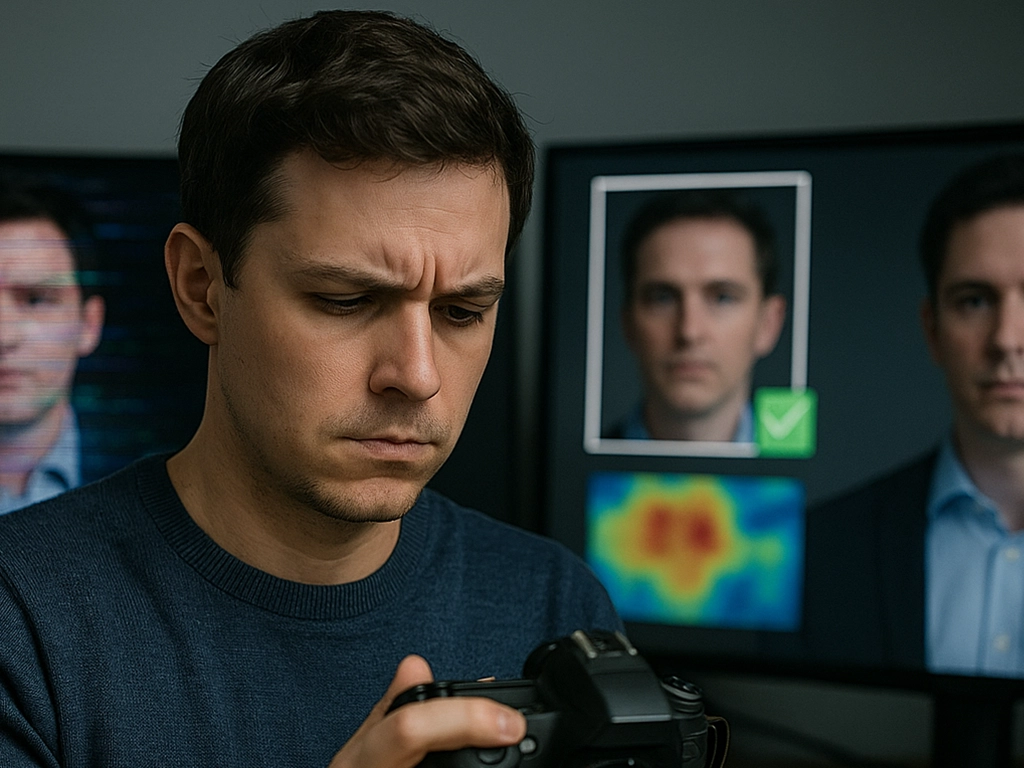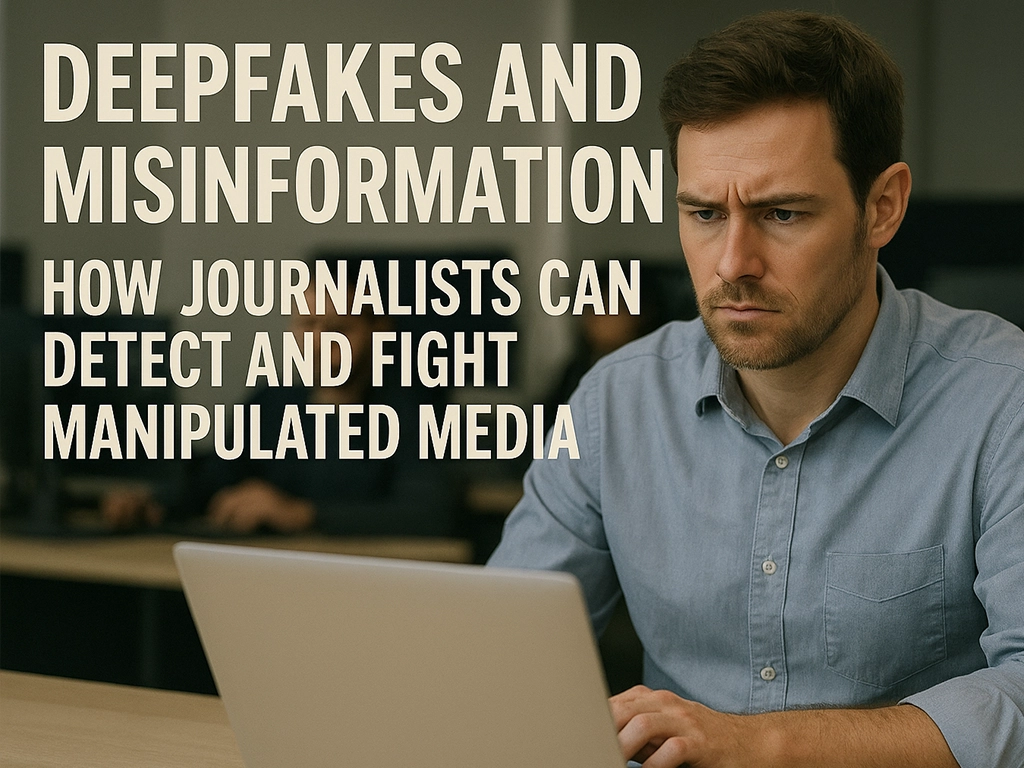In today’s media landscape, the emergence of deepfakes and manipulated content presents significant concerns for journalism. These advanced fabrications, often generated through artificial intelligence, obscure the distinction between fact and fiction, posing risks to public confidence and the credibility of news reporting. This article examines the technological foundations of deepfakes, their ramifications for newsrooms, and the strategies journalists can employ to identify, reveal, and address such challenges.
What Are Deepfakes?
Deepfakes refer to synthetic media—including videos, images, and audio recordings—produced by AI algorithms to convincingly replicate the likeness or voice of real individuals. These technologies enable the alteration of content so that it appears as though a person has said or performed actions they have not. While initially developed for creative and entertainment purposes, deepfake capabilities have rapidly expanded and are now utilized in political disinformation, harassment, fraud, and propaganda campaigns.
The level of realism attained by deepfakes is such that even experienced professionals may encounter difficulty identifying forgeries without specialized analytical tools. Consequently, it is essential for journalists to develop a comprehensive understanding of these technologies and the telltale signs that may indicate media manipulation.

The Risks to Journalism and Democracy
The implications of deepfakes extend far beyond viral internet pranks. In the context of journalism, deepfakes pose a direct threat to:
- Credibility: Deepfakes can discredit legitimate footage or fabricate events that never occurred. Once manipulated content spreads, it’s extremely difficult to correct public perception.
- Public Trust: Audiences may become skeptical of real news content, unsure of what to believe. The erosion of trust can lead to disengagement from credible media sources altogether.
- Safety of Sources: Manipulated media can be used to endanger whistleblowers or activists. In oppressive regimes, fabricated confessions or footage may be used to justify persecution.
- Political Manipulation: During elections or conflicts, deepfakes can be used to spread false narratives, influence opinions, or incite violence. The resulting confusion can destabilize democratic institutions and compromise informed decision-making.
Journalists must also consider that they themselves can become targets of deepfakes—used to discredit their work or reputation.

Detection Strategies for Journalists
While deepfakes are becoming increasingly difficult to identify, several techniques and tools can help journalists verify the authenticity of media:
- Frame Analysis: Reviewing videos frame-by-frame can reveal unnatural facial movements, inconsistent lighting, or glitches around edges. Pay close attention to blinking patterns, reflections in eyes, or mismatched lip-syncing.
- Audio Irregularities: In deepfaked audio, pacing, intonation, and breath patterns may sound robotic or unnatural. Mispronunciations or abrupt cuts may also signal manipulation.
- Reverse Image and Video Search: Tools like Google Reverse Image Search or InVID can help track the original source of a file. They can also reveal whether content was previously published in a different context.
- Metadata Inspection: Examining the metadata of a file can indicate whether it has been edited. Missing or inconsistent metadata may suggest tampering.
- AI Detection Tools: Emerging platforms such as Microsoft’s Video Authenticator and tools from Deepware Scanner or Sensity AI analyze files for manipulation signatures. These tools use their own machine learning algorithms to identify artifacts left by deepfake software.
As tools become more accessible, it is important for journalists to stay updated on the latest platforms and integrate them into their editorial workflow.

Best Practices for Newsrooms
To maintain credibility and stay ahead of misinformation, newsrooms should adopt proactive measures:
- Implement Verification Protocols: Establish internal standards for verifying visual and audio content. These protocols should be part of editorial training and used consistently across teams.
- Train Journalists in Digital Literacy: Educate staff on identifying fake media and using forensic tools. Regular workshops and simulations can help reinforce practical skills.
- Collaborate with Tech Experts: Build relationships with cybersecurity specialists and AI researchers. These collaborations can provide early warnings about new manipulation trends and access to custom detection tools.
- Provide Context in Reporting: When discussing manipulated content, clarify what is real, what is fake, and how it was verified. Transparency builds reader trust and discourages the spread of false narratives.
- Inform the Audience: Empower readers with media literacy tips to identify fakes themselves. Encouraging critical thinking helps cultivate an informed public that is resistant to disinformation.
How USPA Supports the Fight Against Manipulated Media
The United States Press Agency (USPA) recognizes the growing threat of digital misinformation. As part of its mission to uphold ethical journalism, USPA provides:
- Access to training and webinars on misinformation detection. These cover everything from forensic analysis to AI trends in disinformation.
- Partnerships with digital forensic experts. Members benefit from collaborations with professionals who understand how to detect and trace manipulated content.
- Verification guidelines and ethical standards for multimedia content. These documents provide a framework for assessing media integrity.
- A global network of professionals sharing best practices and alerts. This community support fosters quick responses and stronger defenses against emerging threats.
USPA also regularly publishes reports on misinformation trends and provides tools to help members assess risk levels in their own reporting environments.
Conclusion: Upholding Truth in the Era of Digital Misinformation
Addressing the challenges posed by deep-fakes and misinformation is both a technical and journalistic responsibility. As public trust in media becomes increasingly fragile, it is essential for journalists to enhance verification processes, demonstrate transparency, and promote media literacy. With appropriate tools and collaboration—such as support from institutions like USPA—the press can continue to serve as a critical foundation of democracy in the digital era.
In essence, journalists serve not only as conveyors of information but also as guardians of truth. Effectively combating manipulated content necessitates vigilance, ongoing professional development, and unwavering adherence to ethical reporting standards.
